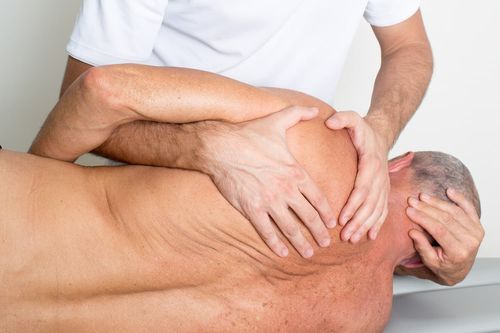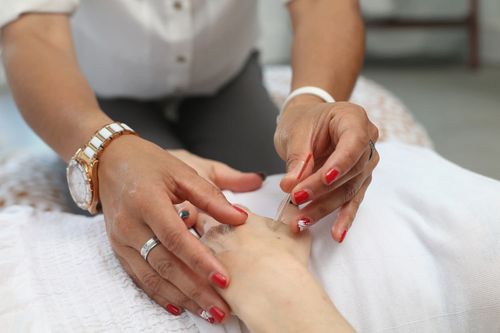What is Myotherapy?
Myotherapy is a type of natural therapy that focuses on the rehabilitation and treatment of various musculoskeletal system-related pain and conditions resulting from improper posture, poor biomechanics and injury. It primarily uses massage as its main tool. However, other techniques, such as dry needling, spinal mobilization and myofascial release, can be incorporated to further assist in getting the client back to his or her optimal health.
The following modalities are used in conjunction with myotherapy to achieve a therapeutic result:
- Soft Tissue Therapy
- Temperature Therapies
- Electromechanical Stimulation
- Myofascial Dry-Needling (MDN)
- Myofascial Stretching
- Rehabilitative Exercise and Corrective Actions

How Does Myotherapy Work?
Myotherapy is good for relieving pain caused by myofascia or muscle dysfunction. The myofascia is a band of soft tissue that surrounds and supports the bones, muscles and organs. When the myofascia experiences inflammation or physical trauma, it loses its pliability and can become tight and restricted. The following are symptoms associated with myofascial pain:
- Stiff joints
- Constant deep nagging pain
- Numbness
- Sore spots in the muscle (also known as myofascial trigger points)
- Recurring "pins and needles" or tingling sensation
- Tightening of the muscles
- Reduced mobility in the joints
- Feeling tired for no reason
The main job of the myotherapist is to restore the musculoskeletal system into good working condition. It is important to work with a myotherapist who has undergone specialist training related to the detection and treatment of the conditions associated with the musculoskeletal system. Aside from knowing various massage techniques, the myotherapist should be knowledgeable about other therapies that can be integrated with the treatment such as:
- Transcutaneous electrical nerve stimulation (TENS) therapy
- Passive stretching
- Dry Needling
- Acupuncture
- Cupping
- Acupressure
- Trigger point therapy
- Muscle energy techniques (METS)
- Remedial and sports massage techniques
- Hot or cold therapy
What are the Benefits of Myotherapy?
Aside from pain relief, myotherapy helps in relieving trigger points. Trigger points are tight muscle fibres which can be caused by physical or emotional stress, disease or injury. Addressing these trigger points can help relieve intense and chronic pain. The modality can be used to address a wide range of conditions such as the following:
- Tennis/Golfer's Elbow
- Tendonitis
- Carpal Tunnel Syndrome
- Back pain
- Fibromyalgia
- Headaches and neck pains
- Muscle strains and sprains
- Muscle spasms
- Wry neck
- Repetitive strain injury (RSI)
- Muscle contusion (corky)
- Hand numbness
- Shoulder impingement syndrome
- Foot pain
What Can You Expect From Myotherapy?
Prior to the treatment session, the myotherapist will conduct a complete health assessment to check the client's symptoms, any medication they may be on, and the full history of any prior illness or surgery which they may have had. This information will help the therapist determine the cause of the symptoms.
Although the client doesn't need a doctor's referral to make an appointment with a myotherapist, the latter has the prerogative to refer the client to other healthcare practitioners for further diagnosis or treatment if they deem it necessary.
During the treatment session, the myotherapist examines and manipulates the muscles or joints or trigger points that are affected with pain. Also, the therapist will test the reflexes of the client. This thorough examination is important in determining whether the symptoms are myofascial in nature.
A myotherapy session usually lasts 45 minutes to an hour, depending on the client's condition. It is ideal to wear loose, comfortable clothing during treatment for ease of movement since the client may be asked to perform different exercises before the treatment proper. The frequency of therapy or follow-up sessions vary according to what is being treated and the client's progress.
Is Myotherapy Safe?
Myotherapy is safe and beneficial for all levels of pain. It involves diverse techniques that can be tailored to suit every person's pain intensity, making this modality extremely safe and unlikely to pose any severe reactions.




